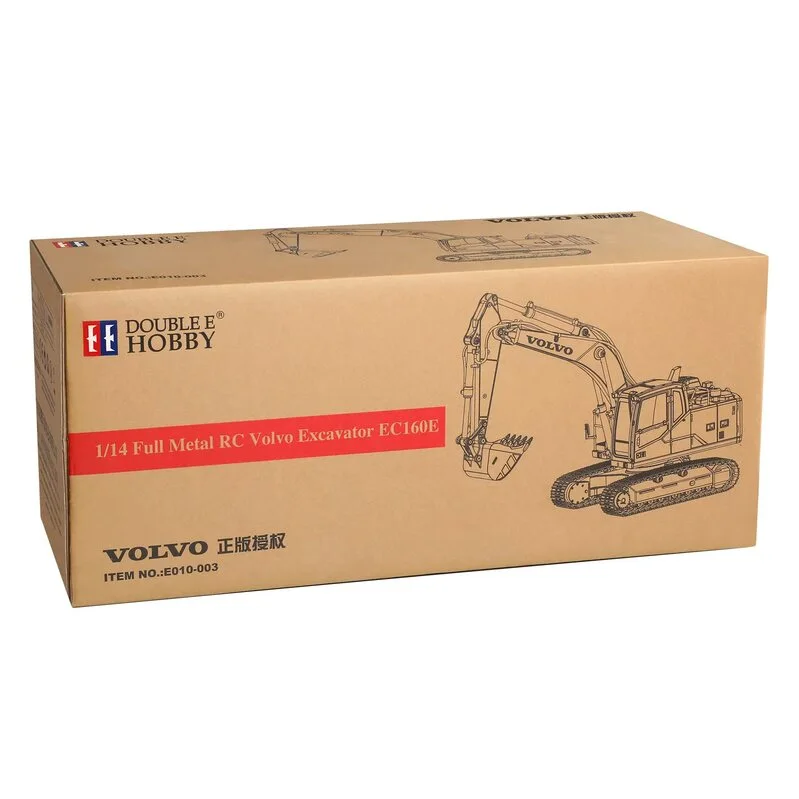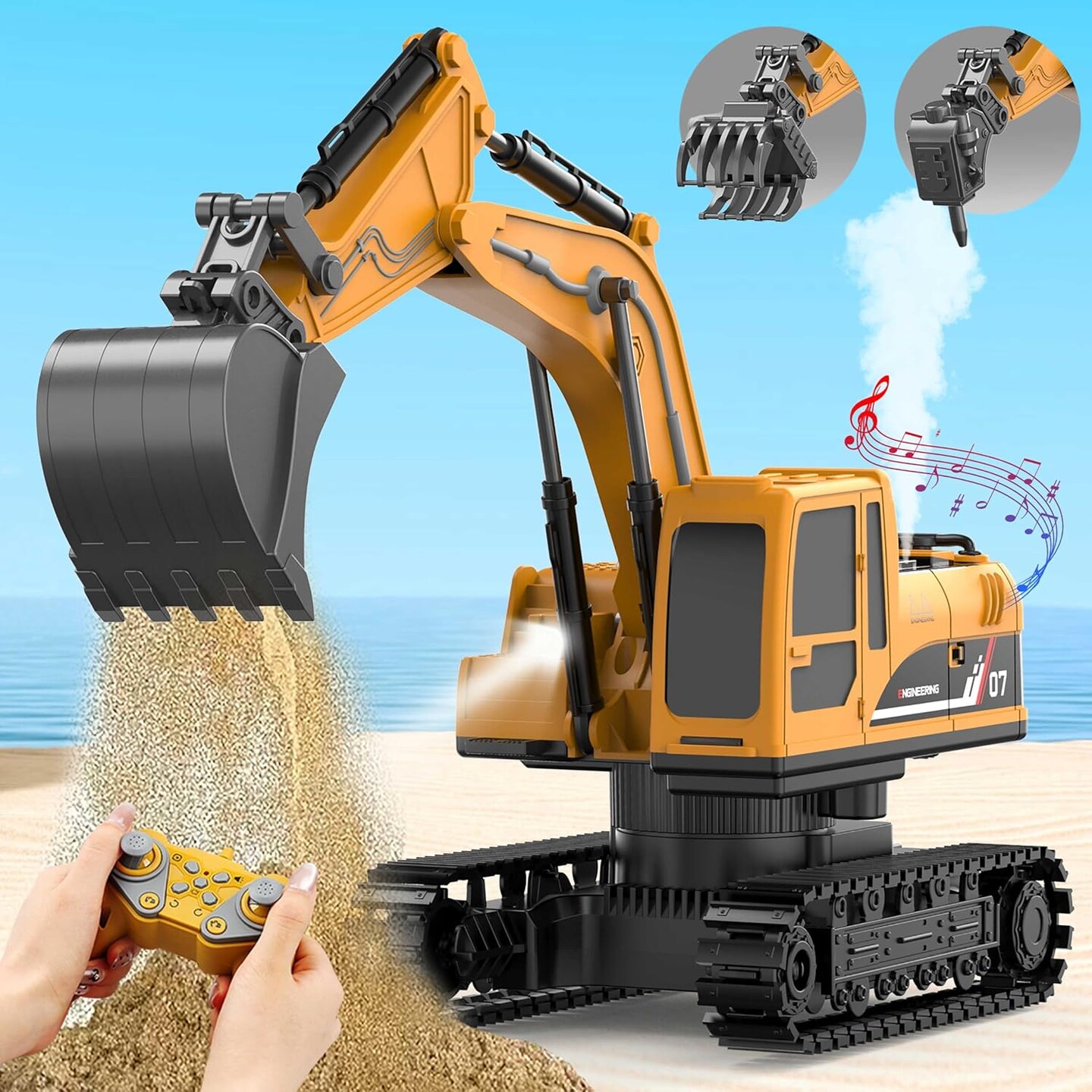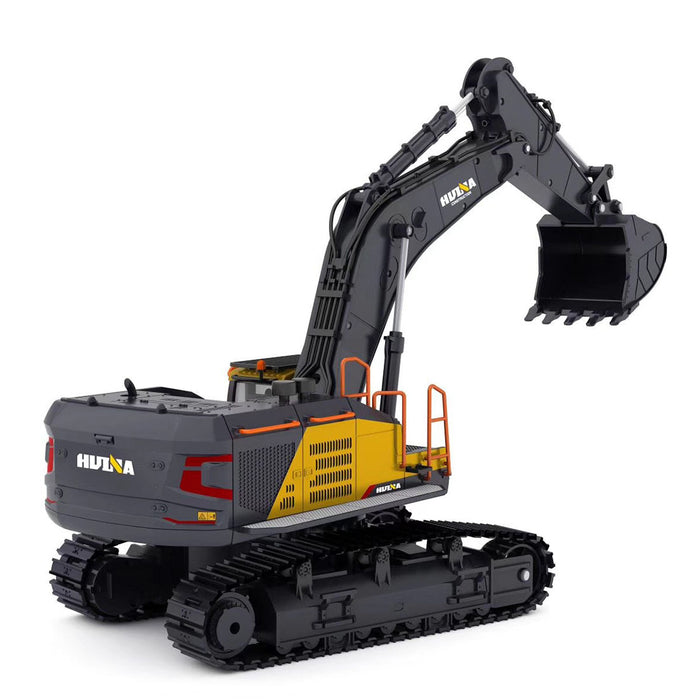The Top Benefits of Integrating a remote control excavator into Your Team
The Important Attributes of Excavator That Make Things a Must-Have Tool
Excavators are indispensable in the building and landscaping sectors. Their functional accessories enable a variety of jobs, from digging to demolition. Furthermore, they flaunt exceptional excavating deepness and reach, powered by durable engines. Driver convenience and portable styles enhance functionality in numerous atmospheres. However, what really establishes excavators apart are their sophisticated hydraulic systems and toughness. Recognizing these functions can clarify why they are considered essential devices on any kind of work website.
Versatile Attachments for Improved Functionality
Although excavators are powerful machines by themselves, the addition of versatile accessories greatly enhances their capability. These add-ons change a standard excavator right into a multi-purpose device, appropriate for a selection of jobs. Buckets, for instance, been available in numerous forms and dimensions, making it possible for operators to dig, scoop, and move materials efficiently. Hydraulic thumbs can be added for enhanced gripping and handling of cumbersome items, such as logs or rocks.Furthermore, specialized attachments like augers and breakers enable exploration and demolition job, increasing the excavator's utility on building sites. remote control excavator. Grapples are one more option, perfect for moving and arranging particles. This adaptability not only enhances performance yet likewise decreases the demand for numerous equipments, conserving time and prices. By equipping excavators with the best attachments, operators can tackle diverse tasks, making them indispensable in the construction industry
Superior Digging Deepness and Reach
Excavators are created with exceptional excavating deepness and reach, enabling them to navigate in limited areas and access hard-to-reach areas. This capacity is important for various construction and excavation projects, where typical equipment might fall brief. With flexible boom arms and extendable tracks, excavators can quickly navigate irregular terrain while preserving stability.The excavating depth can vary considerably among designs, commonly ranging from 10 to 25 feet, depending on the design and function. This attribute enables operators to dig deep into foundations, trenches, and various other deep frameworks efficiently. Furthermore, the reach of an excavator permits precise excavating and product handling without repositioning the machine regularly, conserving time and labor costs.Ultimately, the exceptional excavating deepness and reach of excavators make them vital for experts looking for to complete complex jobs with precision and efficiency. Their convenience boosts efficiency on job sites, showcasing them as a necessary device in contemporary building and construction.
Powerful Engine Efficiency

When it comes to effectiveness and productivity on building and construction sites, powerful engine efficiency plays a critical function in the capacities of an excavator. A robust engine generates significant horsepower, enabling the device to tackle sturdy tasks easily - remote control excavator. This toughness equates right into faster cycle times, making it possible for drivers to total tasks more quickly.Additionally, effective engines supply the essential torque to handle tough surfaces and differed tons, ensuring that the excavator can perform efficiently under different conditions. Whether it is lifting, excavating, or relocating products, the engine's performance directly impacts the overall operational efficiency of the machine.Furthermore, advancements in engine technology have caused enhanced fuel performance, minimizing functional costs while maintaining power output. Ultimately, the engine's performance works as the backbone of an excavator, affirming its condition as a crucial tool in the building and construction industry
Advanced Hydraulic Equipments

Boosted Raising Capacity
A significant improvement in raising capability can be associated to advanced hydraulic systems discovered in modern excavators. These systems make use of high-pressure fluid to create greater force, permitting operators to raise heavier loads easily. The design behind these hydraulics warranties peak performance, offering a remarkable power-to-weight ratio that improves total performance. Therefore, excavators can deal with demanding jobs, such as lifting big products or devices, without endangering stability. In addition, the robust design of hydraulic parts adds to increased toughness and integrity, making them ideal for different construction environments. This boosted lifting ability not only decreases the time required for tasks but additionally lessens the requirement for added machinery, confirming necessary for both performance and cost-effectiveness in the building market.
Improved Accuracy Control
Although traditional excavators typically dealt with accuracy, modern hydraulic systems have transformed control mechanisms, enabling drivers to perform jobs with exceptional precision. These innovative systems make use of symmetrical control valves that permit smoother and much more receptive movements, considerably lowering the margin for error. Operators can now carefully tune the excavator's movements, making it simpler to navigate limited areas and handle fragile products. Enhanced comments systems even more notify drivers of real-time performance, making certain optimal coordination between the machine and driver. This enhanced precision not only improves efficiency but also enhances safety and security on task sites, reducing the risk of accidents. Consequently, modern excavators outfitted with innovative hydraulic systems are invaluable tools for construction and excavation jobs needing meticulous precision.
Driver Comfort and Visibility
Operator comfort and exposure are critical parts in the style of modern-day excavators (remote control excavator). Attributes such as ergonomic seat design, improved presence alternatives, and efficient control formats substantially improve the operator's experience and efficiency. Prioritizing these aspects guarantees that operators can work successfully and safely in various problems
Ergonomic Seat Design
Convenience and exposure are critical in excavator layout, with the ergonomic seat playing an important function in enhancing the driver's experience. An ergonomic seat is engineered to support the driver's body, lowering fatigue during lengthy hours of operation. Adjustable functions, such as seat elevation, back-rest angle, and lumbar support, accommodate individual choices and promote perfect posture. These adjustments boost convenience and make it possible for the driver to preserve focus on jobs without discomfort. In addition, a well-designed seat can offer better side assistance, enabling for smoother maneuvering when the excavator is in operation. This thoughtful style not only improves productivity but additionally adds to overall safety, making certain that operators can execute their tasks successfully and efficiently.
Improved Visibility Attributes
The This Site style of an excavator expands past simply the seat, with improved visibility functions playing a substantial role in driver comfort and general safety and security. Large windows and purposefully located mirrors provide drivers with a clear sight of their surroundings, decreasing dead spots. This style consideration permits far better spatial awareness, which is vital in active job environments. On top of that, numerous excavators incorporate rearview electronic cameras and advanced tracking systems that assist drivers in maneuvering limited rooms. The combination of these visibility features not just advertises security but likewise lowers operator exhaustion by enabling less complicated tracking of workplace. Inevitably, boosted visibility adds to more effective procedures and helps ensure that excavators can execute their jobs effectively and securely.
Control Format Effectiveness
While handling complicated job sites, an effective control layout greatly boosts both driver convenience and presence. A well-designed control configuration guarantees that operators can access essential features with very little initiative, reducing tiredness during lengthy hours. Ergonomic joystick positionings and user-friendly button setups permit smooth operation, enabling operators to maintain concentrate on the job available. Furthermore, clear exposure of both the workspace and the control board is important for security and precision. Modern excavators often incorporate flexible seating and control setups to fit different operator choices, even more boosting convenience. Ultimately, an attentively created control design not only boosts efficiency yet additionally fosters a more secure working environment by enabling drivers to respond swiftly to changing problems.
Compact Design for Urban Environments
As urban building and construction websites commonly deal with space restrictions, a small design comes to be necessary for excavators operating in these environments. These equipments are crafted to browse tight areas, enabling reliable maneuverability in crowded job websites. A lowered impact enables them to work closely to existing frameworks, minimizing disturbance and optimizing productivity.The compact design usually includes shorter tracks and a tighter transforming span, promoting operation in slim streets and constrained locations. Lightweight products add to alleviate of transport, making it easier to relocate the excavator from one location to another within the metropolitan landscape.Additionally, several portable excavators are outfitted with features such as flexible attachments and extendable arms, boosting their capability while maintaining a little dimension. This versatility enables drivers to tackle a variety of jobs, from digging to demolition, all while suitable flawlessly right into the constraints of metropolitan atmospheres.

Sturdiness and Maintenance Considerations
Sturdiness stands as a crucial factor in the performance and long life of excavators, particularly in requiring urban atmospheres. These devices are subjected to rigorous conditions, including differing dirt types, severe temperature levels, and high-frequency use. Top quality products and robust building and construction are essential for making certain that excavators can hold up against these obstacles without jeopardizing functionality.Regular maintenance is equally crucial in preserving toughness. Arranged inspections, prompt oil changes, and the substitute click over here now of used components add considerably to an excavator's life-span. Operators has to likewise take notice of hydraulic systems, tracks, and undercarriages, as these parts usually bear the brunt of wear and tear.Investing in long lasting excavators with extensive maintenance strategies improves dependability and decreases downtime, eventually resulting in raised performance on building and construction websites. For that reason, recognizing the interplay in between resilience and maintenance is necessary for anyone taking into consideration the purchase of an excavator for urban jobs.
Often Asked Inquiries
How Do Excavators Compare to Various Other Building Tools?
Excavators stand out amongst building and construction equipment because of their adaptability, allowing jobs such as lifting, digging, and grading. Contrasted to others, their hydraulic capabilities use better efficiency and power, making them important on different work websites.
What Safety And Security Includes Are Consisted Of in Modern Excavators?
Modern excavators include various safety functions, including rollover defense systems, alarms, and progressed presence improvements. These elements collaborate to decrease threats, making sure driver safety and security while boosting effectiveness on building sites and various other demanding environments.

Can Excavators Be Used in Winter Season Issues?
Excavators can without a doubt be made use of in winter months conditions, given they are furnished with appropriate wintertime accessories and safety measures are taken. Correct upkeep and changes improve their performance, making sure effective operation in spite of challenging climate situations.
What Is the Typical Life-span of an Excavator?
The average lifespan of an excavator normally varies from 7,000 to 10,000 hours of operation. This duration can greatly depend on maintenance techniques, running conditions, and the details design's toughness and style features.
Exactly how Do I Pick the Right Excavator Dimension for My Job?
Selecting the best excavator dimension entails examining project extent, website problems, and material kinds. Take into consideration aspects like reach, depth needs, and weight ability to ensure maximum efficiency and safety and security throughout procedure. Dimension issues significantly in task success. Furthermore, the reach of an excavator allows for specific digging and material read this article handling without repositioning the maker regularly, saving time and labor costs.Ultimately, the superior digging deepness and reach of excavators make them important for experts seeking to finish complicated tasks with accuracy and efficiency. Convenience and presence are paramount in excavator layout, with the ergonomic seat playing an important duty in enhancing the operator's experience. The style of an excavator prolongs beyond just the seat, with enhanced visibility attributes playing a considerable function in driver comfort and general security. Modern excavators typically include flexible seats and control setups to fit different operator preferences, further boosting convenience. Lightweight products contribute to ease of transportation, making it easier to relocate the excavator from one location to one more within the city landscape.Additionally, many compact excavators are geared up with features such as extendable arms and functional add-ons, improving their capability while keeping a tiny dimension.